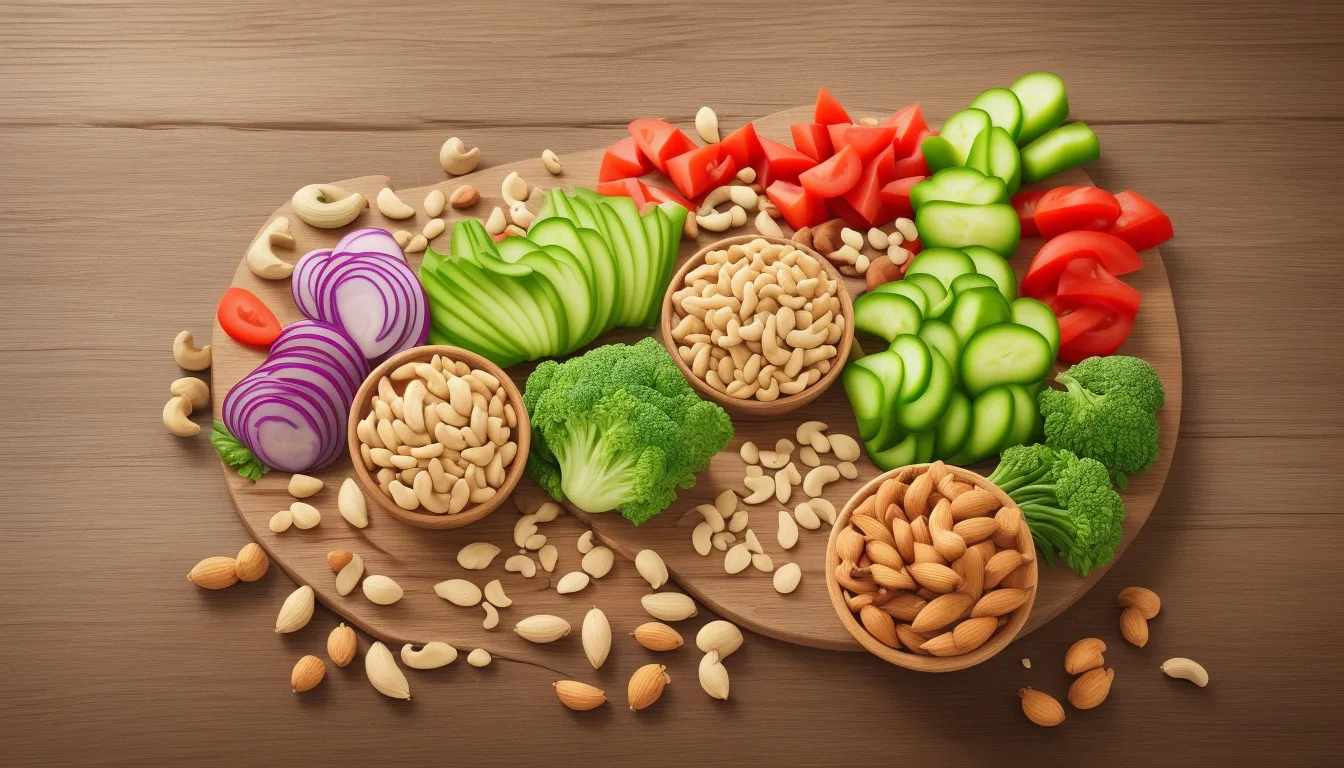
Introduction: Why a calorie deficit matters
If you want to lose weight, you rely on energy balance. You eat fewer calories than you burn. This state is known as a calorie deficit. A sound deficit helps you lose weight at a steady pace. It also helps you save muscle and keep your metabolism steady. This guide uses science to show simple ways to create and keep a deficit without resorting to harsh diets or burning out.
How a calorie deficit works (the science, simply)
Weight change comes from the energy you take in and the energy you spend. When you eat less than your body uses for basic work and movement, your body uses stored fat for fuel. Weight falls. This process follows body rules. As weight drops, your body may slow its energy use, so you must keep your pace steady and support your metabolism. For more details on energy balance and safe weight loss, see the Harvard T.H. Chan School of Public Health (source).
Estimate your needs: Calculate a realistic deficit
- Find your maintenance calories. Use online calculators that ask for age, sex, weight, height and activity. A well-known method is the Mifflin-St Jeor equation.
- Pick a safe deficit. A common target is 10–20% below your maintenance level or 250–750 fewer calories each day. Many people lose about 0.5–1.0 pound (0.25–0.5 kg) each week this way. Bigger deficits can speed up weight loss but may lead to muscle loss, greater hunger and habits that are hard to keep.
- Change it as needed. Watch your weight and body shape. Change your calorie count every few weeks as your weight and energy needs change.
Quality matters: Not all calories are the same for hunger, health and performance
A calorie deficit produces weight loss. The food you choose guides hunger, energy, nutrients and body shape. Use foods that give you:
- Protein: It helps keep muscle and fills you up and uses more energy during digestion.
- Fiber-rich vegetables, fruits and whole grains: They add bulk and give nutrients at low calories.
- Healthy fats: They help with hormones and satiety; choose nuts, seeds, olive oil and fatty fish.
- Fewer ultra-processed foods: They pack many calories and fill you less.
Ten practical, science-backed calorie deficit hacks
-
Protein at every meal
Aim for 20–30 grams of protein each meal (or 1.4–2.0 g/kg body weight each day spread across meals for many active adults). Protein cuts hunger and saves muscle when calories are low. -
Focus on whole foods and fiber
Switch refined carbs for vegetables, beans and whole grains. Fiber fills you on fewer calories. -
Volume eating with low-calorie, high-volume foods
Fill your plate with vegetables, broth-based soups, salads and lean protein. These help you feel full without many calories. -
Use a steady daily deficit, not crash diets
Pick a deficit that fits your life. Deep cuts may cause a rebound in eating, slow your metabolism and cost muscle. -
Track in a flexible way
Use tracking to learn, not to force yourself. Try an app or a food diary for 2–4 weeks to know portions. Then, ease into habits you can hold. -
Strength train 2–4 times a week
Lifting weights tells your body to keep muscle during weight loss. It also helps keep your metabolism active. -
Bring in more movement
Small changes like standing, walking during calls or taking stairs burn extra calories without formal exercise. -
Eat protein and carbs around workouts
Having them before and after exercise aids performance and recovery. This way, you can keep your workout quality even on low calories. -
Look after sleep and manage stress
Poor sleep and ongoing stress can change hunger signals and make it hard to stick to your plan. Aim for 7–9 hours of sleep and use ways to reduce stress. -
Plan treats and social meals
Get ready for higher-calorie times. Manage these moments by using smaller portions earlier or by moving a bit more that day, not by cutting out all calories.
A sample week to apply these hacks
- Day 1: Start with a 15% deficit. Eat protein every meal, add a large vegetable salad at lunch and have a soup-based dinner.
- Day 2: Do strength training in the morning (30–45 minutes). Eat more carbs around your session.
- Day 3: Do active recovery—take a long walk or do mobility work. Keep your protein focus.
- Day 4: Repeat the weight session; include a large portion of vegetables at every meal.
- Day 5: Make it an active day—go hiking or take a long bike ride. Eat a few more carbs around the activity to keep energy.
- Day 6: Plan a social meal. Eat moderately earlier, enjoy the social meal, and do not try to cut back too much later.
- Day 7: Rest, review your week, note your hunger, mood and success. Make one small change if needed.
Tracking and tools: Make monitoring work for you
- Basic scale: Weigh yourself 1–3 times a week, using the same time and conditions.
- Measurements and photos: Check your waist, hips and use photos each month. These can show changes that the scale does not.
- Food tracking app: Use one for a short time to learn calorie counts, then switch to estimating portions.
- Strength numbers: Keep track of lifts and reps to see if you keep your strength and muscle.
Common stalls and how to fix them
Plateaus can happen. Here are some fixes:
- Check your calorie estimates and portion sizes again.
- Look at weight changes or changes in your activity: As you lose weight, your body needs fewer calories. Adjust your deficit.
- Eat more protein and do strength training to keep muscle.
- Add a bit more movement or some extra cardio for one or two weeks.
Small, science-backed changes usually help when you stall.
Avoiding common mistakes
- Do not count only on cardio to create a calorie deficit. Cardio helps, but pairing it with strength training and diet changes works best.
- Skip crash diets that say they give fast results. Such methods often cost muscle and are hard to keep.
- Do not ignore vitamins and minerals. Get enough nutrients from diverse foods or a multivitamin if you need one.
Mindset: Habits over willpower
Steady weight loss grows from habits, not just willpower. Build a setting that guides you to a deficit. Keep high-calorie treats out of reach, pre-portion snacks and plan your meals. Small, steady actions build up over time.

A brief note on metabolism and adaptation
As you lose weight, your resting energy needs can drop. A smaller body uses fewer calories, and your body may change how it uses energy. That is why a slow deficit, saving muscle with protein and exercise, and checking your progress often are key. For more on long-term weight loss, see research from well-known public health sources (source).
Smart meal ideas that support a calorie deficit
- Breakfast: Greek yogurt mixed with berries, a small handful of oats and nuts—packed with protein and fiber.
- Lunch: A large mixed salad with grilled chicken, beans and a light vinaigrette—full of volume, protein and fiber.
- Dinner: A stir-fry with tofu or lean beef, many vegetables and a small serving of brown rice.
- Snacks: An apple with nut butter, cottage cheese with cucumber, or a protein shake if you need extra protein.
Bulleted practical checklist before starting a deficit
- Find your maintenance calories.
- Pick a moderate daily deficit (10–20% is a good start).
- Plan to include protein at every meal.
- Schedule 2–4 strength workouts per week.
- Increase daily movement.
- Check progress weekly instead of daily.
- Think ahead for social events and treats.
- Get enough sleep and manage stress.
- Review and adjust every 2–4 weeks.
When to seek professional help
If you face health issues like diabetes, thyroid problems, a history of eating issues, pregnancy or postpartum, talk with a doctor or dietitian before changing your calorie intake. They can shape a plan that keeps you safe while meeting your goals.
Short FAQ (three Q&A using keyword variations)
Q: What is a calorie deficit and how much do I need?
A: A calorie deficit means you take in fewer calories than you spend. For many, a good start is a 10–20% cut from your maintenance level, usually 250–750 calories less each day. This change can lead to slow and steady weight loss.
Q: Is a calorie deficit the same as starvation or extreme dieting?
A: No. You reach a calorie deficit by eating nutrient-dense food, getting enough protein and doing strength workouts. Extreme or long-term underfueling can be harmful; a planned, moderate calorie cut is safer and easier to keep.
Q: Will reducing calories make me lose muscle?
A: Lowering calories can lead to muscle loss if you do not get enough protein and do not do strength training. To help protect muscle, use a moderate plan with good protein and regular lifting.
One authoritative source to read more
If you look for clear, research-based ideas on energy balance and safe weight loss, see resources from well-known public health organizations like the Harvard T.H. Chan School of Public Health (source).
Final thoughts and call to action
A well-planned calorie deficit, mixed with enough protein, regular strength sessions and small daily habits, can help you keep weight loss both safe and steady. Start with simple goals, track what works and change gradual steps as your progress shows. If you feel ready to start, pick one idea from the checklist above—for instance, add one weight session and include more protein at one meal this week—and build from there. Want a simple, customized 4-week plan to turn these hacks into real action? Reach out for a plan that fits your life, taste and goals.
[center]Always consult with your doctor prior to making drastic diet changes.[/center]
[center]As an Amazon Affiliate, Savvy Keto makes a small commision (at no extra cost to you) on any purchases you make thru affiliated links you click on.[/center]




